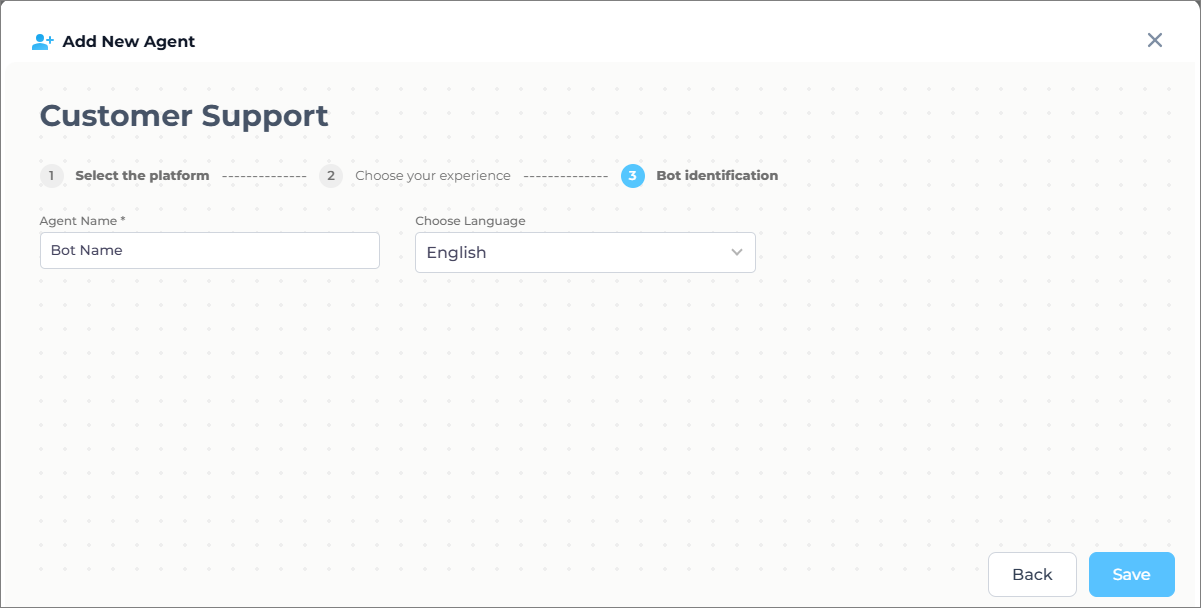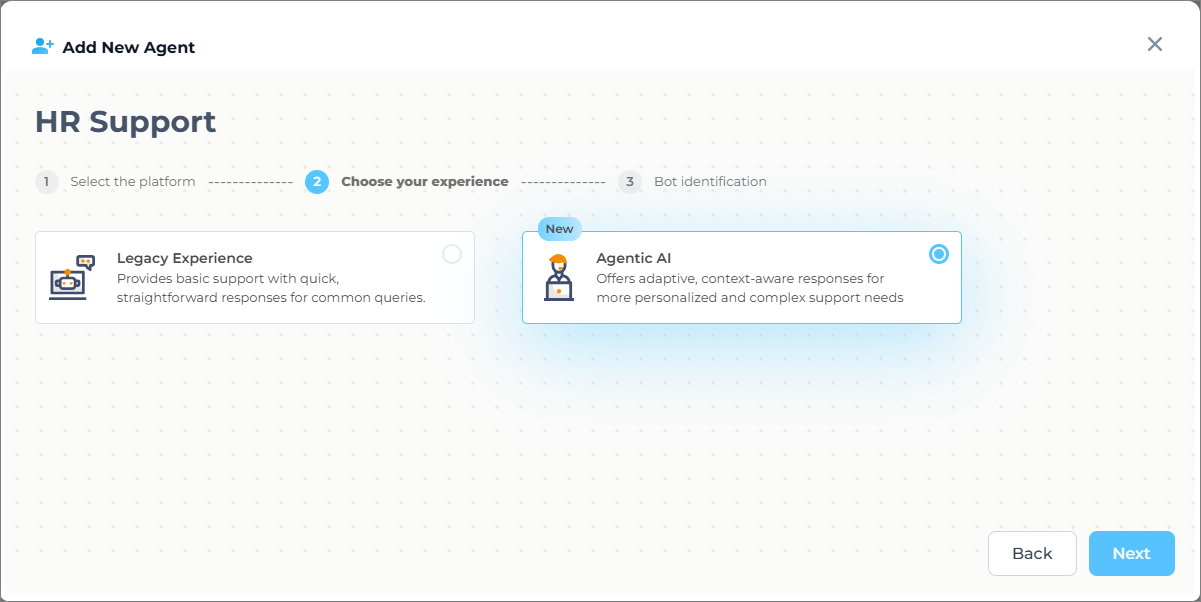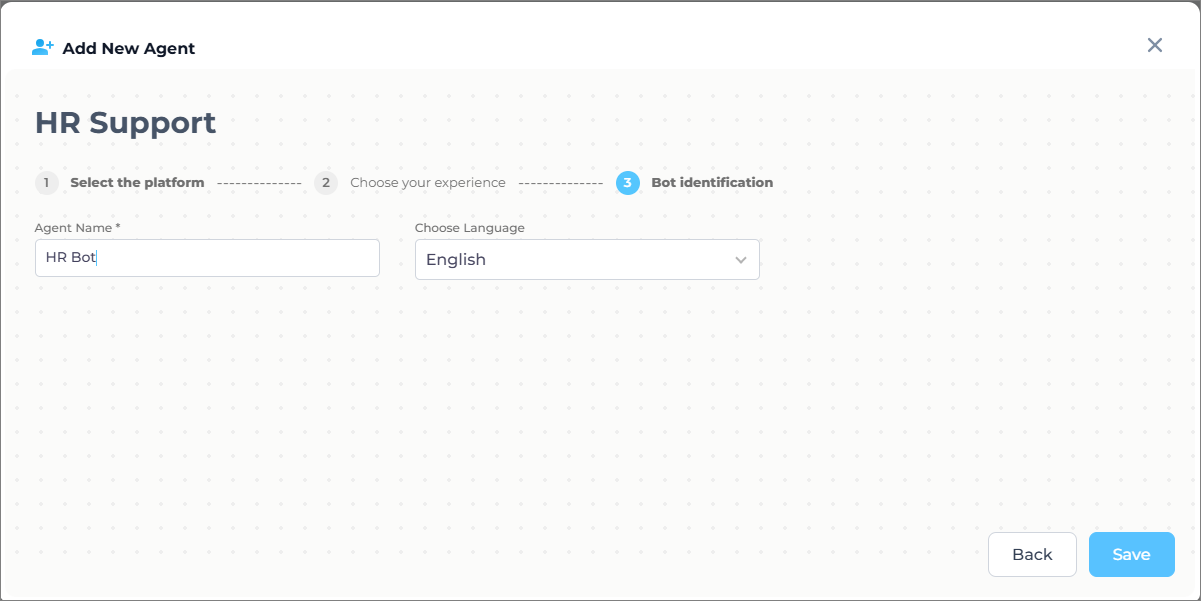Add A New Virtual Agent
Setting up an agent is essential for creating an effective and efficient conversational AI system. Virtual Agents are akin to your support agents, who help customers accomplish everyday tasks, such as logging tickets and finding resolutions to commonplace queries.
Supported Platforms
SUVA is a highly customizable virtual agent that can be seamlessly integrated with platforms like Salesforce, Zendesk, Khoros, and websites. It actively engages with visitors, ready to answer their queries, log cases, and connect them to live agents when needed. SUVA is versatile enough to handle any scripted conversations, functioning as a sales agent to sell products, schedule demo calls, and collect email addresses for marketing purposes. Once the objective is defined, setting up a fully functional SUVA can be accomplished in just a few hours.
For organizations looking to deploy a virtual agent for customer support or HR assistance, SUVA can be set up within minutes. It comes pre-configured to manage both of these scenarios out of the box, making implementation quick and effortless.
Adding a Virtual Agent
There are two ways a user can log into SUVA:
-
1. Log into SUVA using the domain provided to you (https://{domainname}.searchunify.com/suva). Both SearchUnify and SUVA users can use this.
-
2. A SearchUnify user can also install and auto-log into SUVA from Marketplace in SearchUnify admin panel.
-
For first time users, the agent list will be empty. You will only see a list of agents if you have added them in SUVA. To add an agent, click Add a new agent.
-
Select a domain for user roles—Customer Support or HR Support—for the virtual agent and Click Continue.
a) Virtual agent for customer support can be set up on Zendesk, Khoros, Website, and Salesforce. Select a platform for configuration and click Next.
b) Upon selecting Website, there are two options to select the experience for your chatbot; 1) Legacy Experience and 2) Agentic AI.
Legacy Experience relies on predefined rules and static workflows, offering limited flexibility. It answers based on fixed scripts, often struggling to handle unexpected queries or adapt to context changes, leading to a robotic and linear interaction. Agentic experience uses advanced AI to understand intent, context, and user behavior dynamically. It engages in more natural, conversational, and adaptive interactions, proactively offering solutions, asking clarifying questions, and learning from interactions to continuously improve, making it feel more intuitive and human-like.
Refer to the respective docs to see how both experiences look like when deployed on a website.
-
Legacy Experience - An Overview of the SUVA Chat Window
-
Agentic Experience - An Overview of the SUVA Agentic AI Interface
c) Selecting Website (Agentic) require the following details:
-
Agent Name to give your agent an identity. A unique name helps you locate an agent when multiple agents are in use.
-
Choose Language to select the default language SUVA will use to converse with the visitors.
d) Selecting Zendesk, Khoros, Salesforce, or Website (Legacy Experience) requires the following details:
-
Each virtual agent has an Agent Name to give it an identity. A unique name helps you locate an agent when multiple agents are in use.
-
An agent can greet users with a "Ciao!", "Bonjour!", or a simple "Howdy?" Configure the greeting in Welcome Message.
-
The last setting is Choose Language, where you can select the default language SUVA will use to converse with the visitors.
Optionally, you can also Upload Training Data in the form of the chat transcripts in a .txt file. This will help the bot to auto-generate intents. You can simply drag and drop the file here as well.
Note. Chat transcripts are of value to you if you were earlier using another chatbot or even a live agent. These can help SUVA understand user intents.
d) After entering the required details, click Save.
a) When you select HR Support, you see Website option as a virtual agent for HR support can be set up only on websites. Select Website and click Next.
b) Upon selecting Website, there are two options to select the experience for your chatbot; 1) Legacy Experience and 2) Agentic AI.
Legacy Experience relies on predefined rules and static workflows, offering limited flexibility. It answers based on fixed scripts, often struggling to handle unexpected queries or adapt to context changes, leading to a robotic and linear interaction. Agentic experience uses advanced AI to understand intent, context, and user behavior dynamically. It engages in more natural, conversational, and adaptive interactions, proactively offering solutions, asking clarifying questions, and learning from interactions to continuously improve, making it feel more intuitive and human-like.
Refer to the respective docs to see how both experiences look like when deployed on a website.
-
Legacy Experience - An Overview of the SUVA Chat Window
-
Agentic Experience - An Overview of the SUVA Agentic AI Interface
c) You will see three templates; 1) Operations, 2) Training and Policies, and 3) Company FAQs. Select one or more templates and click Continue. You can Skip this part if you don't select any of the listed templates (The Skip button is only visible when you don't select a template).
Each of the templates involve pre-defined chatbot stories including related intents, entities, and responses. These are helpful because you need not to add the training data from scratch. For example: the Operations template includes stories for Leave Application, Leave Balance, and Holiday Calendar. So, you get an agent loaded with training data if you select a template and can edit it as and when required.
d) Selecting Website (Agentic) require the following details:
-
Agent Name to give your agent an identity. A unique name helps you locate an agent when multiple agents are in use.
-
Choose Language to select the default language SUVA will use to converse with the visitors.
e) Although to create an HR agent (Legacy Experience), enter the following details:
e.a) Agent Name: Give a name to your virtual agent.
e.b) Welcome Message: Enter a welcome message, e.g. Welcome, how can I help you?
e.c) Choose Language: Select a language for your agent.
You can also upload the chat transcripts in a .txt file. This will help the bot to auto-generate intents. You can simply drag and drop the file here.
f) Once done, click Save.
You will land to the Manage Virtual Agent screen. You can see the list of configured virtual agents on the home page next time you log into SUVA.
Fig: The above snapshot shows the Manage Virtual Agent screen. The first agent is the Agentic agent and the second one indicates Legacy Experience agent.
Last updated: Thursday, September 25, 2025











